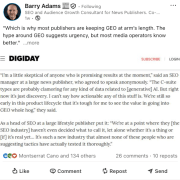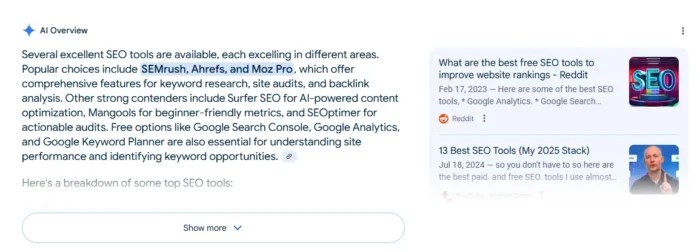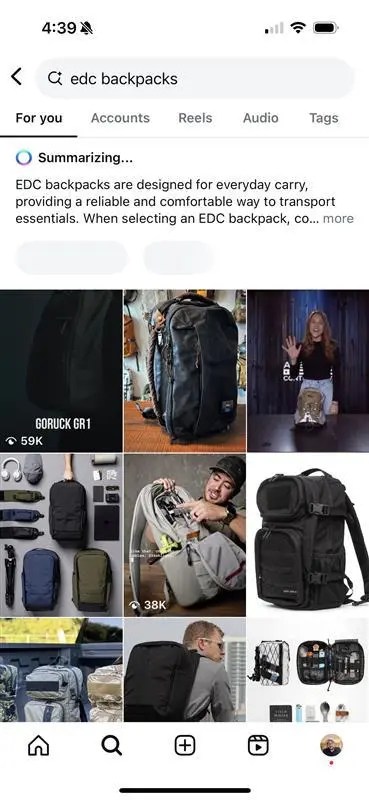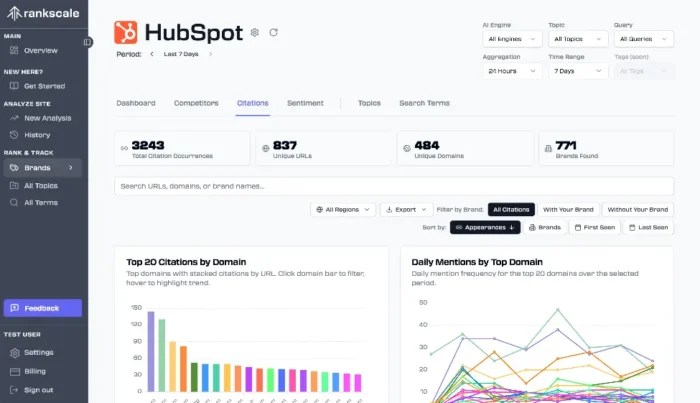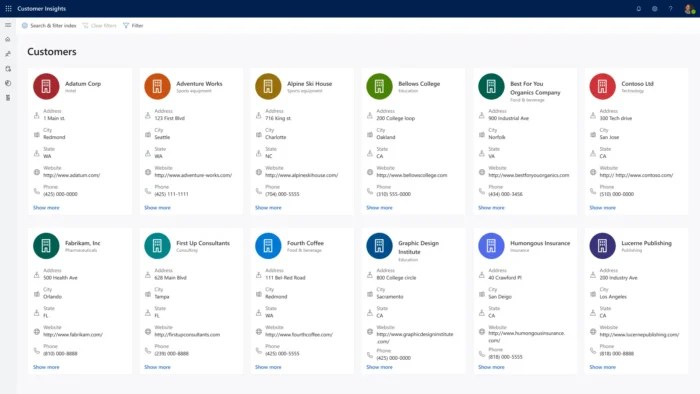AI has fundamentally changed how people search and engage with information online.
Features like AI Overviews may boost visibility, but they’ve also reduced clicks, leaving many websites with less traffic despite stronger rankings.
Discovery no longer happens in just one place.
It’s fragmented across search engines, social platforms, paid ads, and AI tools, creating a complex user journey that’s harder than ever to track.
As behavior shifts with these new technologies, search marketing is evolving in response.
Yet while the platforms, tools, and touchpoints keep changing, the core principles of effective marketing remain the same.
Marketers who stay grounded in these fundamentals will be best equipped to adapt and grow.
Here are nine timeless marketing principles that will hold steady – no matter how search evolves.
1. Focusing on search intent: Why people search
Where people search and find information will continue to change over time as preferences for LLMs, social media, or video content shape where people go for answers.
However, what remains constant is search intent.
Users are always looking to:
- Learn about something.
- Navigate to brands they know.
- Compare and evaluate different options.
- Purchase or convert.
Focus on the why behind a search – the intent driving it.
The key question is whether your content aligns with that intent.
If it doesn’t, you’re overlooking a critical driver of user behavior.
When content matches search intent, users immediately recognize its value and engage, which is why intent should remain central to your marketing strategy.
2. The lasting value of brand recognition and loyalty
Even as AI continues to drive change in how companies reach their audiences, brand recognition and loyalty remain important pillars of long-term engagement and growth.
Discovery channels are shifting as people find brands through social media, search engines, paid ads, email, and more.
That’s why it’s important to continually reassess the customer journey and understand where your audience is finding you.
After discovery, your job is to highlight your unique value – what sets you apart from competitors and how you provide real value to your audience.
Keep asking yourself:
- Why should someone choose my brand?
- What makes us stand out?
The clearer and more consistently you communicate this in the spaces that matter, the more you’ll earn trust, recognition, and reliability – all of which shape how people respond to your brand.
Brand loyalty isn’t automatic. It’s something you earn by building real relationships with your customers and consistently providing value.
Loyalty creates long-term stability and growth, even as platforms and algorithms continue to shift.
While search intent and brand recognition can attract new visitors, loyalty turns impressions into conversions and builds lasting customer lifetime value.
3. Knowing and understanding your audience
Beyond search intent and branding, truly knowing your audience is essential for long-term marketing success.
Without that insight, you risk falling into “spray and pray” campaigns that waste resources and fail to connect.
Building clear audience personas helps you decide not just what campaigns and content to create, but how to present them in ways that resonate.
That means understanding who your audience is, what motivates them, their pain points, their values, and where they spend their time.
These insights form the foundation of a strategy built to genuinely connect with your audience.
Dig deeper: SEO personas for AI search: How to go beyond static profiles
4. Trustworthiness is currency
Even if your content matches search intent and your brand is well recognized, audiences won’t engage without credibility.
This matters even more today, as AI tools summarize information and highlight only the most trustworthy sources.
Both search engines and AI prioritize trust signals. But for users, those signals are everything.
Expertise, consistency, transparency, and reliability are what build that trust.
People want to feel confident that your brand will deliver on its promises and provide lasting value.
When they believe you’re dependable, they’re more likely to engage, return, and recommend your brand to others.
5. Customer service and experience drive perception
Today, customer service is inseparable from brand experience.
Every interaction – whether answering a support ticket or replying to a social media comment – shapes how people perceive your credibility and value.
Testimonials and reviews create a powerful feedback loop: one story sparks another, influencing how others view your brand.
Campaigns can drive visibility, but audiences still turn to peer reviews on platforms like Reddit to validate those impressions and decide whether to trust you.
Audience sentiment has become its own form of publicity.
With user-generated content (UGC) shaping perception and AI systems relying on reviews and sentiment signals to recommend brands, customer experience is now a direct driver of both reputation and visibility.
Dig deeper: How to use SEO and CX for better organic performance
6. Good user experience supports conversions
A core principle that hasn’t changed is the need for an optimized user experience.
When someone lands on your site, the page should minimize friction in the buying journey.
Whether visitors arrive through ads or organic search, they need clear conversion paths that guide them smoothly forward.
Audiences expect ease and clarity when looking for information or taking action.
Slow load times, unnecessary clicks, or confusing layouts increase drop-offs, abandoned forms, and carts – leaving users frustrated.
A good user experience makes the journey to conversion as effortless as possible.
Done well, it not only boosts conversions but also builds satisfaction and trust.
7. Mobile-first experiences: Meeting users where they are
AI may be transforming how people search, but mobile devices remain the primary way users access and engage with brands.
For many, the first interaction with your brand happens on a phone.
That’s why user experience must extend beyond conversion paths.
It also has to be fully optimized for mobile. Otherwise, you risk frustration, lost trust, and missed conversions.
Mobile users abandon sites that load slowly, require pinching and zooming, use hard-to-tap buttons, or rely on clunky forms.
Even a few seconds of delay or disruptive layout shifts can cause drop-offs.
And because search engines prioritize mobile-friendliness, optimizing for mobile isn’t just about usability. It also directly impacts rankings and visibility.
8. Accessibility is essential
Accessibility is a core part of creating inclusive experiences for your entire audience.
In the U.S., it’s also a legal responsibility.
Making your site accessible means adding features like:
- Screen reader compatibility.
- Alt text for images.
- Strong color contrast.
- Keyboard navigation.
If accessibility is overlooked, you risk excluding parts of your audience and facing ADA lawsuits.
But when you design with accessibility in mind, you reach more people, strengthen trust, and ensure everyone can engage with your brand.
9. Quality content and authority still define success
No matter how search evolves, quality content and authority remain the foundation of visibility and trust.
Algorithms may shift and discovery channels may change, but users will always value content that is accurate, relevant, and genuinely helpful.
Authority is earned over time by:
- Consistently publishing original, reliable content.
- Being cited by other trusted sources.
The more credibility your brand builds, the more likely users (and search engines) are to consider you a worthwhile recommendation.
Dig deeper: Mastering content quality: The ultimate guide
Marketing that lasts beyond AI
AI is transforming how people search and how brands reach them, but the fundamentals of marketing haven’t changed.
What still matters is:
- Understanding intent.
- Knowing your audience.
- Meeting them where they are.
- Building trust and loyalty.
- Delivering real value.
Technology and platforms will keep evolving.
But the brands that stay grounded in these timeless principles will be the ones that adapt, grow, and thrive in the future.
Read more at









